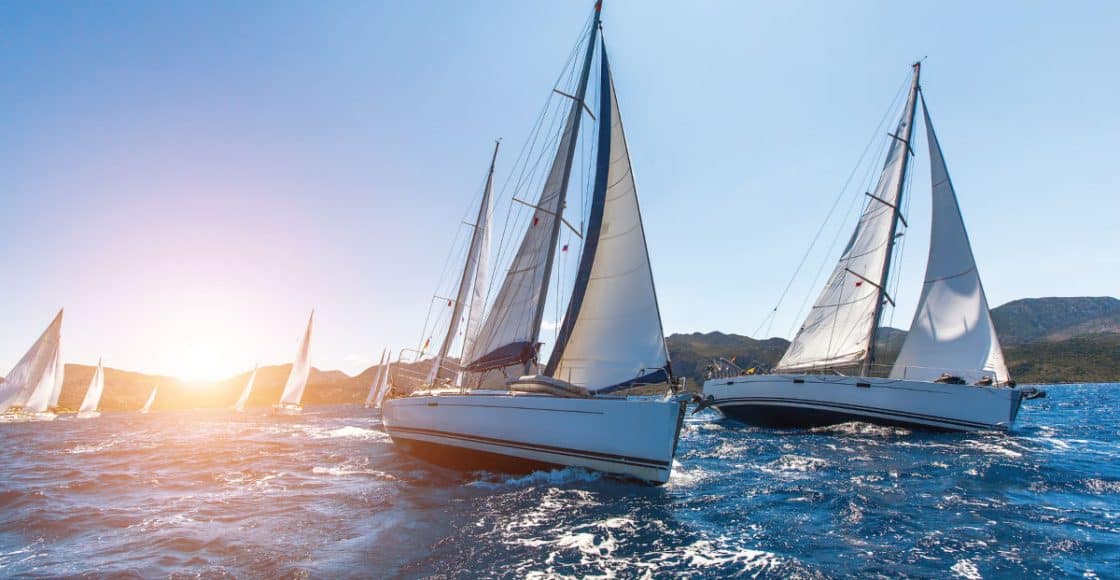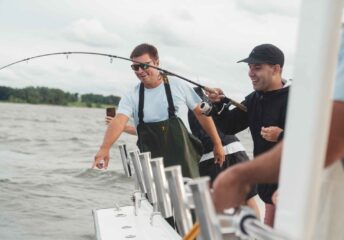Types of Sailboats
Last Updated on August 15, 2023 by Boatsetter Team
Sailboats are one type of boat, but just because they all have sails doesn’t mean they’re all the same. There are subsets of sailboats and they differ by their shape (or number of hulls), the type of sailing rig, and their best primary use. Let’s investigate.
Discover sailboat rentals near you— only at Boatsetter
Sailboat shapes
Sailboats can be monohulls or multihulls, which can be catamarans with two hulls or trimarans with three.
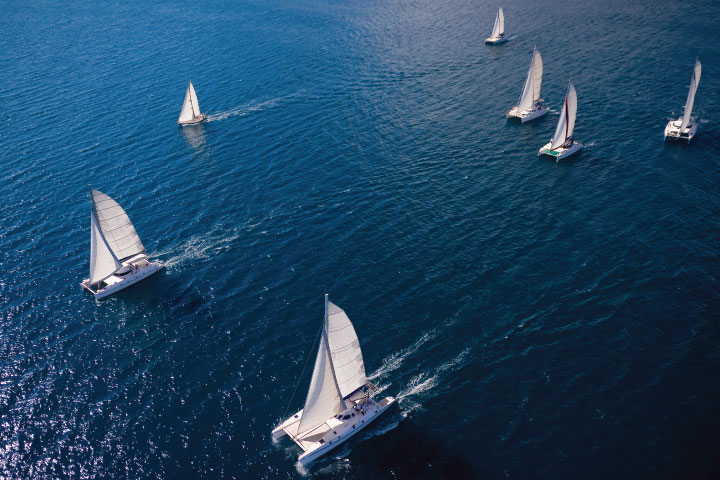
Monohulls
Monohulls are the classic sailing boat with one hull. Large, traditional, and older versions have deeper and heavier keels integrated into the hull for greater stability. At the same time, newer designs have fin keels that are attached rather than integrated appendages. Monohull boats can be used for racing or cruising.
Catamarans
Catamarans have two hulls that are connected by a bridge deck. Cats are prized for their large deck and accommodations space, stability, and shallow draft, so many mid-sized cats can be found in charter fleets worldwide.
Production cats are typically built for comfort rather than speed, but there are high-performance carbon fiber racing cats like those in the America’s Cup.
Trimarans
Trimarans are boats with three hulls. They can be large cruisers with fixed hull supports or small racers where the structural arms that hold the amas (outer hulls) fold to make the whole boat narrower. This is handy when fitting into a small slip or onto a trailer. Even more than catamarans, trimarans are known to be fast sailors.
More sailboats of all shapes (but especially catamarans) are experimenting with foils where the hull(s) ride out of the water to minimize wetted surfaces and maximize speed.
READ MORE: 10 Best Beginner Sailboats
Sailboat rigging
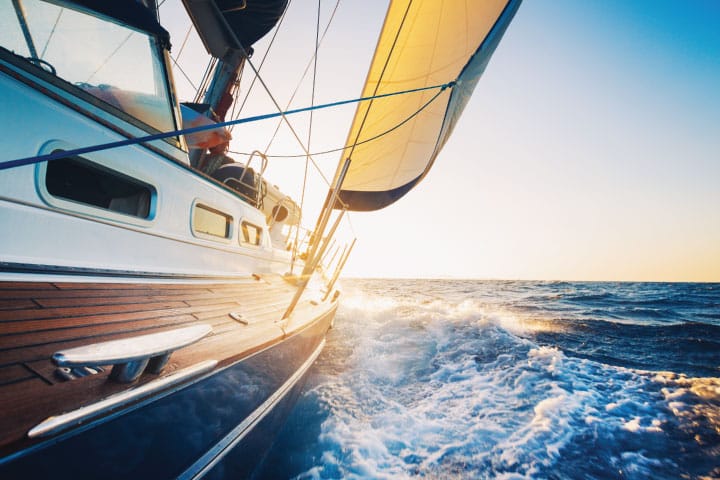
The rig of a sailboat includes the spar (mast) that holds the sails up, the boom that holds the bottom of the mainsail, and the shrouds or stays that support the mast. One sailboat can have multiple masts.
The number and placement of the masts decide what kind of boat it is. A sloop has one mast but may have multiple headsails (the sails that are in front of the mast), and therefore it may be called a cutter sloop.
A ketch or a yawl has a second smaller (mizzen) mast aft of the main mast. Schooners have multiple masts, but the secondary mast is ahead of the main mast rather than behind it. Many classic tall ships are outfitted as schooners, not generally found in modern recreational sailing.
Different uses of sailboats
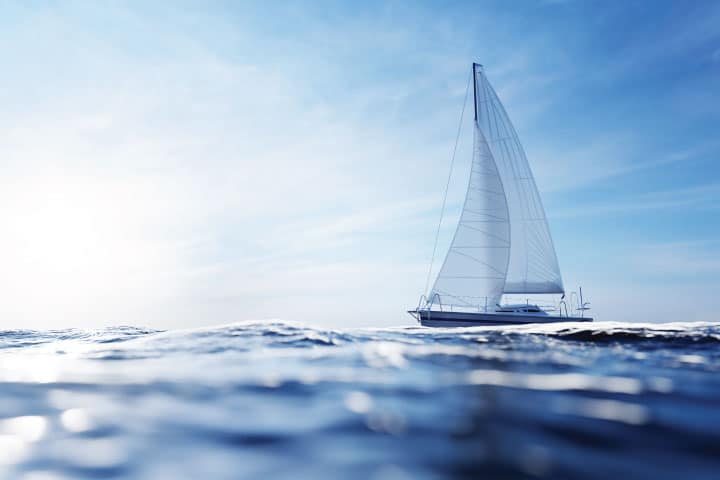
As mentioned above, sailboats can be distance cruisers, racers, or something in between. Much of how they’re used will depend on their size and shape.
- Daysailers: The primary use of a daysailer is for an afternoon sailing in a bay or harbor. You can daysail on the ocean, and any boat can be sailed for just a day. Still, typical daysailers are usually smaller (under 30 feet), have no or minimal accommodations below, and are used for short outings.
- Cruisers: Sailboats can cruise for a weekend or a lifetime. Cruisers are often outfitted with amenities to accommodate overnight stays, so they have a galley, a cabin, and a head (bathroom). They vary in size, can be mono- or multihulls, and can carry any rig type.
- Racers: Although any sailboat can be raced, some models are specifically designed to do so. They’re usually built lighter and carry more sail area.
- Racer-cruisers: Racer-cruisers are performance boats (usually sloops) that can cruise. Some sailors will argue that there’s no such thing and that it’s all marketing rather than reality as companies try to make customers believe their boats are fast. Lightly built cruisers are often classified as racer-cruisers.
- Bluewater cruisers: Sailboats designed to cruise across oceans are often called bluewater cruisers. They’re well equipped, have large water and fuel tanks, and are often loaded with technical and cruising gear to be able to stay at sea for a long time. Again, these sailboats can have any number of hulls or masts to qualify for this moniker.
- Motorsailers: Heavy sailboats with big engines may be called motorsailers but it’s not a name that appeals to their owners because it implies the boat is heavy and slow under sail.
- Sailing dinghies: Small sailboats that are often used to teach sailing are sailing dinghies. They’re designed for one or two people and can be basic like a Lido or Sabot or competition level such as a Finn, Nacra, or Laser.
Learn more about sailboats with Boatsetter
An expert sailor knows a sailboat isn’t just a boat with sails — there are nuances and knowing the differences will make you not only better informed, it will also enable you to decide which kind of sailboat is right for you.
Of course, the best way to get to know a sailboat is by hands-on practice. Rent a sailboat — with a captain or to sail solo — and get on-the-water practice. In no time, you’ll be a pro.
About us
Boatsetter is a unique boat-sharing platform that gives everyone— whether you own a boat or you’re just renting — the chance to experience life on the water. You can list a boat, book a boat, or make money as a captain.
List. Rent. Earn— Only at Boatsetter
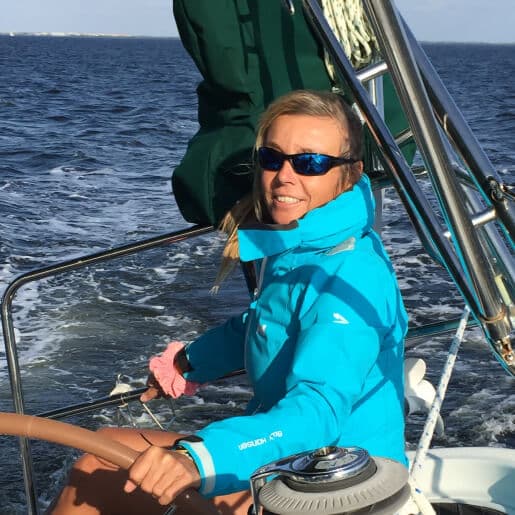
Zuzana Prochazka is an award-winning freelance journalist and photographer with regular contributions to more than a dozen sailing and powerboating magazines and online publications including Southern Boating, SEA, Latitudes & Attitudes and SAIL. She is SAIL magazines Charter Editor and the Executive Director of Boating Writers International. Zuzana serves as judge for SAIL’s Best Boats awards and for Europe’s Best of Boats in Berlin.
A USCG 100 Ton Master, Zuzana founded and manages a flotilla charter organization called Zescapes that takes guests adventure sailing at destinations worldwide.
Zuzana has lived in Europe, Africa and the United States and has traveled extensively in South America, the islands of the South Pacific and Mexico.
